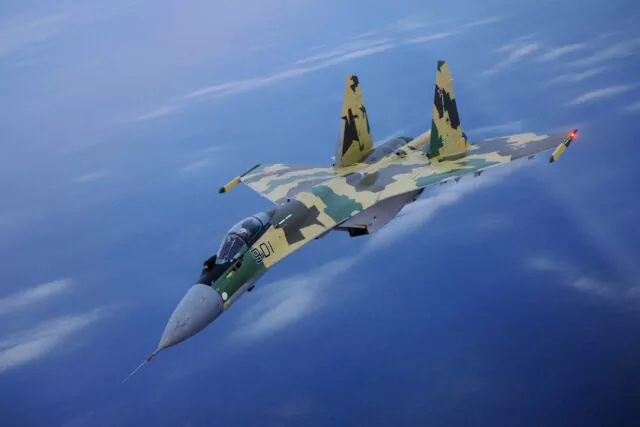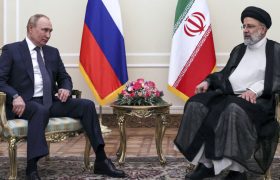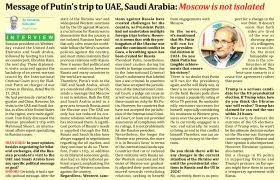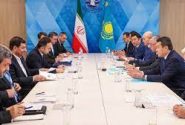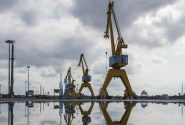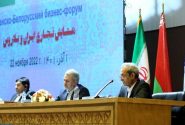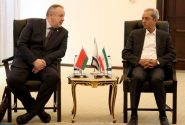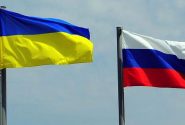This development is significant, as in recent years, similar contracts were canceled for the sale of Russian Su-35s to Algeria, Egypt and Indonesia under pressure from the United States and the threat of economic sanctions (The Eurasian Times, November 7, 2022). As a result, these countries bought US F-15 fighter jets or French Rafale fighters instead. Thus far, China is the only country that has succeeded in buying Sukhoi Su-35s from Russia, and India’s negotiations with Moscow have yet to make any notable progress (The Diplomat, April 17, 2019).
But in the new geopolitical environment brought on by Russia’s war against Ukraine, Iran may indeed become the new destination of the Russian fighter, which underlines a burgeoning military relationship between Moscow and Tehran. For the first time, the commander of the Islamic Republic of Iran Air Force (IRIAF), Brigadier General Hamid Vahedi, officially announced on September 4, 2022, that “the purchase of Sukhoi Su-35s is currently being discussed, rather than Sukhoi Su-30s. This issue is on the agenda, and we hope to be able to get these 4++ generation fighters in the future” (Tehran Times, September 4, 2022).
While official Russian sources neither confirmed nor denied this announcement, Shahriar Heidari, a member of the National Security and Foreign Policy Commission of the Iranian Parliament, confirmed on January 15 that “the Sukhoi Su-35 fighter jets that Iran has ordered from Russia will arrive in early 1402 [Iranian calendar that begins on March 21, 2023].” The lawmaker noted that Tehran has also ordered other military equipment from Russia, “including air defense systems, missile systems and helicopters, most of which will be received soon” (Tasnim News Agency, January 15).
Some sources have alleged that Iran is receiving the Su-35s in exchange for its drone exports to Russia (Euromaidan Press, December 15, 2022). However, as of now, it is difficult to find evidence of a formal contract between Moscow and Tehran regarding the purchase. Thus, the key sources here remain Vahedi’s and Heidari’s public confirmations. While Russia has yet to react publicly in rejecting or confirming the existence of such a contract, Moscow’s confidentiality could be the result of deepening relations between the two countries on defense and security matters. Hamidreza Azizi, an Iranian expert at the German Institute for International and Security Affairs, believes that “Russia will deliver 24 Su-35s to Iran but probably not more than that. … The sanctions imposed on Russia mean it cannot produce Sukhoi-35s. Some parts require special technology that cannot be found in Russia” (Donya-e-Eqtesad, January 11).
Perhaps, the most immediate reason for Iran’s purchase of the Sukhoi Su-35s is the strong need of the IRIAF to modernize its fighters. According to recent media reports, “Iran’s air force heavily relies on overhauled US-made planes, including F-5 and F-14 fighters purchased prior to the 1979 Islamic Revolution” (Amwaj Media, January 17). Furthermore, largely due to hostile relations between Iran and the United States, Tehran “has not acquired any new fighter aircraft in recent years, excluding a few Russian MiG-29 Fulcrum fighters.” Other than the MiG-29, Iran mainly utilizes “locally modified F-4 Phantom II, F-14 Tomcat and F-5E/F Tiger II planes from the 1970s” (Presstv.ir, December 28, 2022). As such, Tehran’s purchase of Su-35 fighter jets would facilitate the renewal of some of the IRIAF’s capacities and possibly lay the foundation for further cooperation in defense production between Russia and Iran. According to Russian-outlet Sputnik, “Even though the cost of maintaining and operating this jet appears to be high for Iran, these costs could be reduced if there are agreements on the joint production of the Su-35 engine in the Islamic Republic” (Sputnik, January 20).
From another angle, purchasing the Su-35s would represent one of the most important results to come thus far from the lifting of Iran’s arms embargo. United Nations Security Council Resolution 2231, in July 2015, endorsed the Joint Comprehensive Plan of Action (JCPOA) regarding Iran’s nuclear program. However, as the JCPOA broke down, “all restrictions on the supplies of major arms to and all arms from Iran expired in October 2020. This means Iran will be legally able to buy and sell conventional weaponry, including small arms, missiles, helicopters and tanks” (Al Jazeera, October 17, 2020). Additionally, the embargo on the export of Iran’s ballistic missiles is set to be lifted in October 2023.
Regarding the wider implications, as mentioned, the Su-35s will strengthen the capabilities of the IRIAF. In a recent interview with Sputnik, Iranian military expert Mohammad-Hassan Sangtarash stipulated that “this aircraft will be especially effective if Iran can install original weapons on it. The Super Flanker Su-35 can play the role of a combat mini-AWACS [airborne warning and control system], and if connected to Iran’s radar network, it will acquire unique point defense capabilities. If Iran purchases [Russian] technologies and kicks off joint massive production [of the Su-35], it can gain a certain advantage over the fighters and warships” of its neighbors, including Azerbaijan (Sputnik, January 20).
Furthermore, Iran’s purchase of the Su-35 fighter jets will affect the balance in regional air power vis-à-vis the Arab countries in the Persian Gulf region, especially the United Arab Emirates, Bahrain and Saudi Arabia, all of which have fragile relations with Iran. As a result, these countries, and possible others, might turn to more weapons from the West, especially the US F-35 fighter jets. Relatedly, simmering tensions with Tel Aviv—including the alleged Israeli drone attack on Iranian territory in January 2023—may also influence this deal, as the advanced fighters will improve Iran’s defensive and preventive defense against possible Israeli attacks (Iranintl.com, February 2).
Although, Iranian expert Mohsen Jalilvand presents a different point of view: “Iran’s defense and military power is based on deterrence, relying on missile and drone power. This means that Iran’s military and defense deterrence power is not based on the air force and fighters. Therefore, advanced fighters are not a turning point in Iran’s defense deterrence capability” (Irdiplomacy.ir, October 10, 2022).
Nevertheless, it seems that if and when the purchase of Russia’s Sukhoi Su-35 fighter jets is finalized, it will be one of the most consequential arms purchases in Iran since the 1979 Islamic Revolution. While modernizing and increasing the capabilities of Iran’s air force, it will also bring the budding military and defense relationship between Tehran and Moscow into a new stage, which will have key consequences on the balance of power and deterrence throughout the South Caucasus and Middle East.


